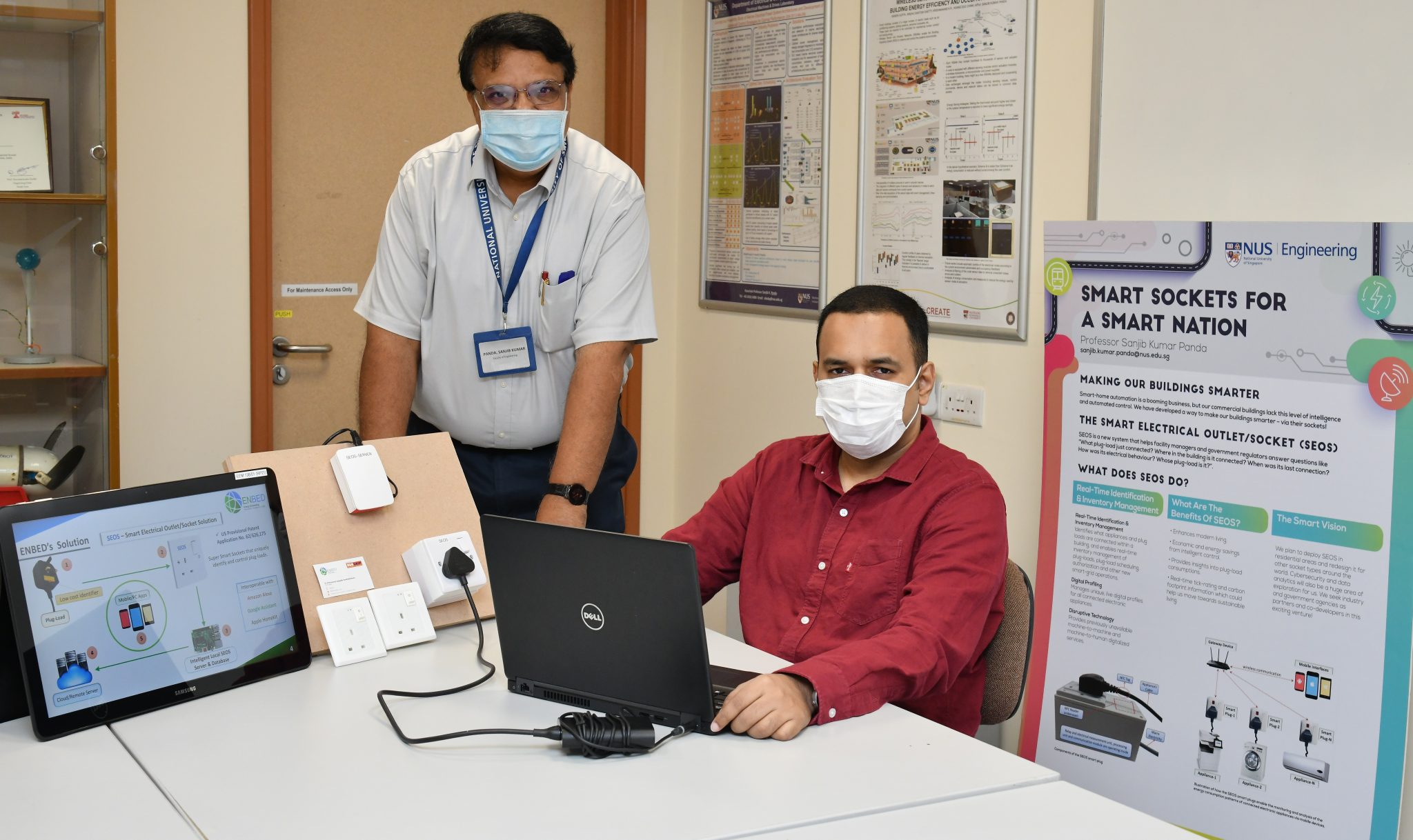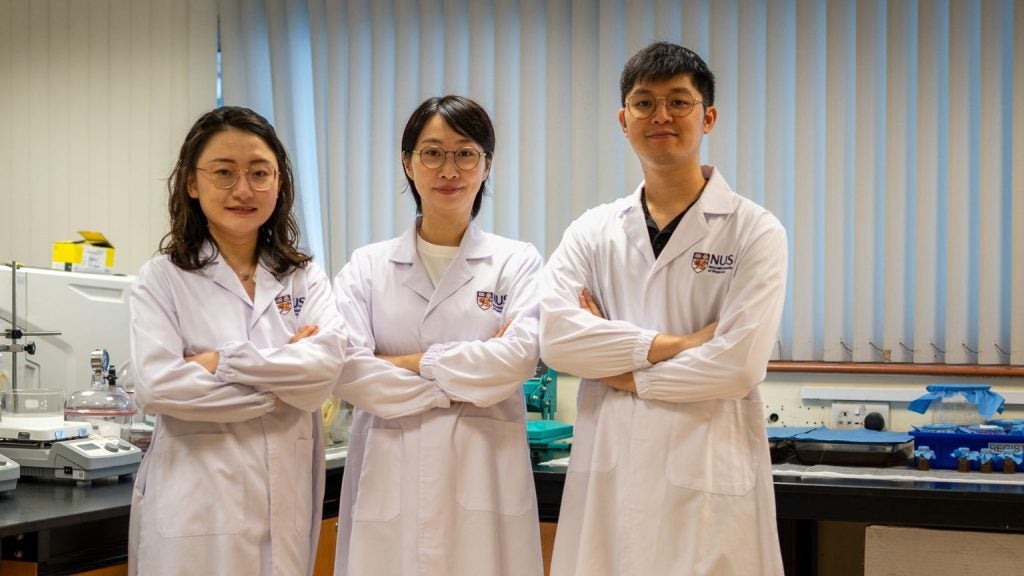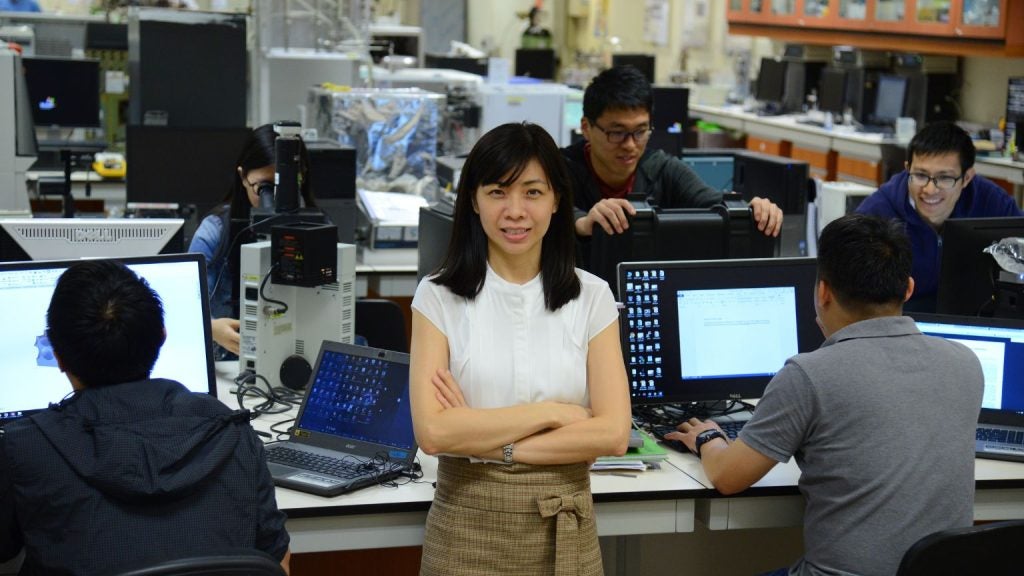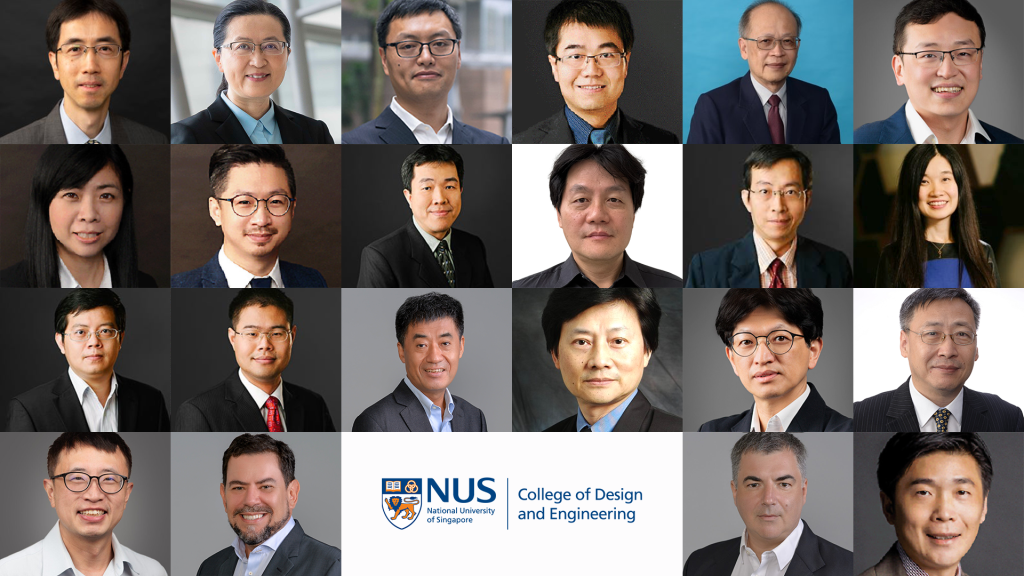
Many homeowners make use of so-called smart plugs to control devices such as lights, TVs and air conditioners from a convenient app on their phone.
But how really "smart" are these plugs? Building a smart nation requires a smart infrastructure. So what if instead of individual plugs, operated largely independently, you could develop a truly smart power system capable of digitally managing electrical energy consumption in real-time across entire homes, offices or even across several buildings?
That was the motivation for a group of NUS researchers from the Department of Electrical and Computer Engineering to develop the Smart Electrical Outlet/Socket (SEOS) system, led by Associate Professor Sanjib Kumar Panda.
Responding to a call to install smart sockets in newly-built apartments as part of Singapore's Smart Nation Drive, Assoc. Prof. Panda along with researchers Dr Hoang Duc Chinh and Dr Krishnanand Kaippilly Radhakrishnan founded the startup ENBED in 2018 to develop and commercialise the SEOS system.
The system overturns the usual paradigm of making individual devices "smart", and focuses instead on two outcomes: less cost and less waste. "The current trend is to put a computing unit in every new appliance, which generates a lot of e-waste and drives up costs," Dr. Krishnanand says. "We are avoiding that. A smart nation should have buildings that are inherently smart."
The SEOS system

The SEOS system comprises three main parts: the physical wall outlets, low-cost Near Field Communication (NFC) stickers used to identify each plug, and the server software and app for monitoring and controlling the system.
The physical SEOS outlet supplies power to appliances and devices just like a regular wall socket. To install it, an electrician replaces the faceplate of a regular outlet with the SEOS faceplate, which recognises the plugged-in devices and can communicate with the SEOS server via Wi-Fi. An entire building's outlets could be easily upgraded in a day.
To identify devices, an NFC sticker containing a unique ID is attached to the plug of each device. Devices can still be used and powered without the sticker, if the system is configured to do so, but the SEOS network will not gain the benefits of recognising them.
The entire network is managed by a central SEOS server which continuously monitors the power drawn by each socket and, by way of the stickers, keeps track of the electrical specifications of the devices plugged into the system.
To register a new device with the system, the user simply needs to put a new sticker on its plug, and connect it to a SEOS outlet. An app then allows the user to select the type of device it is from a list, or manually input the data themselves. In this way, device-specific metadata such as the electrical ratings and the Energy Label (energy efficiency 'tick' ratings) can be recognised by the system.
Smartness on a larger scale
The developers say the SEOS system can help cut electricity bills by plug-load scheduling - turning off power to specific appliances or equipment when not needed, rather than leaving them in idle or standby mode which continues to draw power. Think, for example, of water coolers and vending machines, printers and sound systems, set-top boxes and wi-fi routers.
Operators of a SEOS-enabled network can also track and quantify how much energy various devices consume - including calculating energy costs - and then configure the system to deliver power only when needed.
Another benefit would be electrical safety, preventing fires caused by overloaded plugs. Since metadata from every plug is registered with the SEOS software, if a device such as a kettle is drawing more current than it is rated for, SEOS can automatically cut off its power and alert the user.
A further spin-off effect of the system means it could also provide an extra security for locations such as data centres and other secure facilities. By configuring the SEOS system to deny power to unidentified, stickerless or unauthorised devices, the electrical system itself turns into a "building firewall".
An 'Internet of Electricals'
The SEOS system offers a range of possibilities for energy management and conservation. A scaled-down version of the full system with all components has been successfully lab-tested and pilot projects are planned to test the SEOS system on a larger scale. Developers say several potential clients have already expressed interest in the system.
The ultimate goal, they say, is to have a smart nation, where not just individual devices are smart, but the overall electrical infrastructure that serves those devices is also smart, which then helps optimisation on a larger scale.
"Many smart products that you can buy have one-time smartness," Dr. Krishnanand says. "But we are looking at creating the foundation for an 'Internet of Electricals' with evolvable smartness."
ENBED received support and financial backing from the NUS Graduate Research Innovation Programme (GRIP), a scheme that encourages the University's talented graduate students and research staff to establish and run high potential start-ups based on deep technologies.





